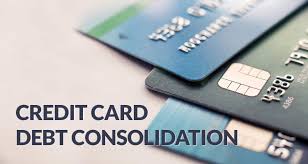In today’s digital world, customers expect to be able to pay with credit cards for goods and services. If you want to maintain robust sales, it’s crucial to accept plastic.
But how exactly do you set up a merchant account? What does the process involve? In this comprehensive guide, we’ll cover everything you need to know to start taking credit card payments for your business.
By the end, you’ll understand the requirements, terminology, and steps to obtain a merchant account so customers can check out with ease using the payment method of their choice. Let’s get started!
Understanding Merchant Account Basics
First, a quick overview of key concepts:
Merchant account: Allows your business to accept credit/debit card payments through a contractual agreement with a merchant bank or processor.
Processor: Handles authorization, settlement and PCI compliance on behalf of their merchant banks. Links you to card networks like Visa and Mastercard.
Gateway: The interface you integrate into your online store or point-of-sale system for payment submissions. Examples are square, Shopify Payments.
Discount rate: Percentage charged by banks on each transaction to cover processing costs, usually 1.5-3.5% + $0.10-0.30 per swipe.
Now that basic terms are defined, let’s dive into the process to obtain a merchant account and gateway.
Steps to Get a Merchant Account
The general steps are:
- Research providers – Compare services, rates and integrations from multiple banks.
- Apply – Submit an application with business/owner details and tax forms.
- Verification – Banks check business/personal credit histories, call references.
- Underwriting – An actual person reviews your application for final approval.
- Onboard with gateway – Get system integrated with your point-of-sale or website.
- Start accepting payments – Cards can now be swiped or entered online securely.
- Payment settlement – Funds deposited minus fees within business days.
Let’s break down each stage in more depth.
Researching Merchant Account Providers
When starting research, consider:
- Industry experience – Some focus more on specific verticals like retail or service industries.
- Equipment options – Like physical card readers, integrated payment buttons for e-commerce sites.
- Payment methods – Visa, Mastercard, Amex, Discover etc. and digital wallets support.
- Additional services – Options for recurring billing, merchant cash advances, invoicing.
- Rates and fees – Look beyond just discount percentages for total annual costs.
- Customer support – Evaluate hours, response times and resolution methods.
Take your time comparing fully before applying so you pick the best provider for your business needs.
Completing the Application
Most merchant account applications require:
- Business contact information like tax ID, physical address, website URL.
- Personal info on owners including SSN, home address, DOB.
- Bank account numbers for funding and statement deposit.
- Estimated monthly/annual card volume projections.
- Industry type selection from a dropdown menu.
- Supporting docs like voided check, business license, certificate of authority.
Be ready with all info handy to submit the application smoothly.
Verification, Underwriting and Approval
Next steps typically include:
- Soft credit pulls conducted on business and owners/guarantors.
- Calling personal and business references for additional review.
- Review by an actual underwriter for final risk assessment.
- Notification of approval or requests for additional documentation if needed.
Most small merchants receive approval within 1-2 weeks if no issues arise. Larger volume businesses may take longer.
Integration and Testing
Once approved, next steps are:
- Setting up your online gateway or physical payment terminal integration.
- Generating Test Cards for simulating charges to ensure setup is correct.
- Completing certifications on PCI compliance standards for handling sensitive data.
- Final approval for “live” funds settlement to begin accepting real customer payments.
Integration testing before going live is important to avoid costly mistakes.
In Summary
Obtaining a merchant account allows businesses to gain the significant competitive advantage of accepting credit cards and digital payments conveniently.
By following the straightforward application process with valid documentation and choosing a provider via careful research, most merchants are up and running within 2-4 weeks. With a merchant account set up properly, you can focus growing your business through increased accessible sales.
If at any point you need support, your new merchant service provider should be available to assist. I hope this guide has provided clarity on the initial steps to offering payment flexibility for your customers. Let me know if any other questions come up!






